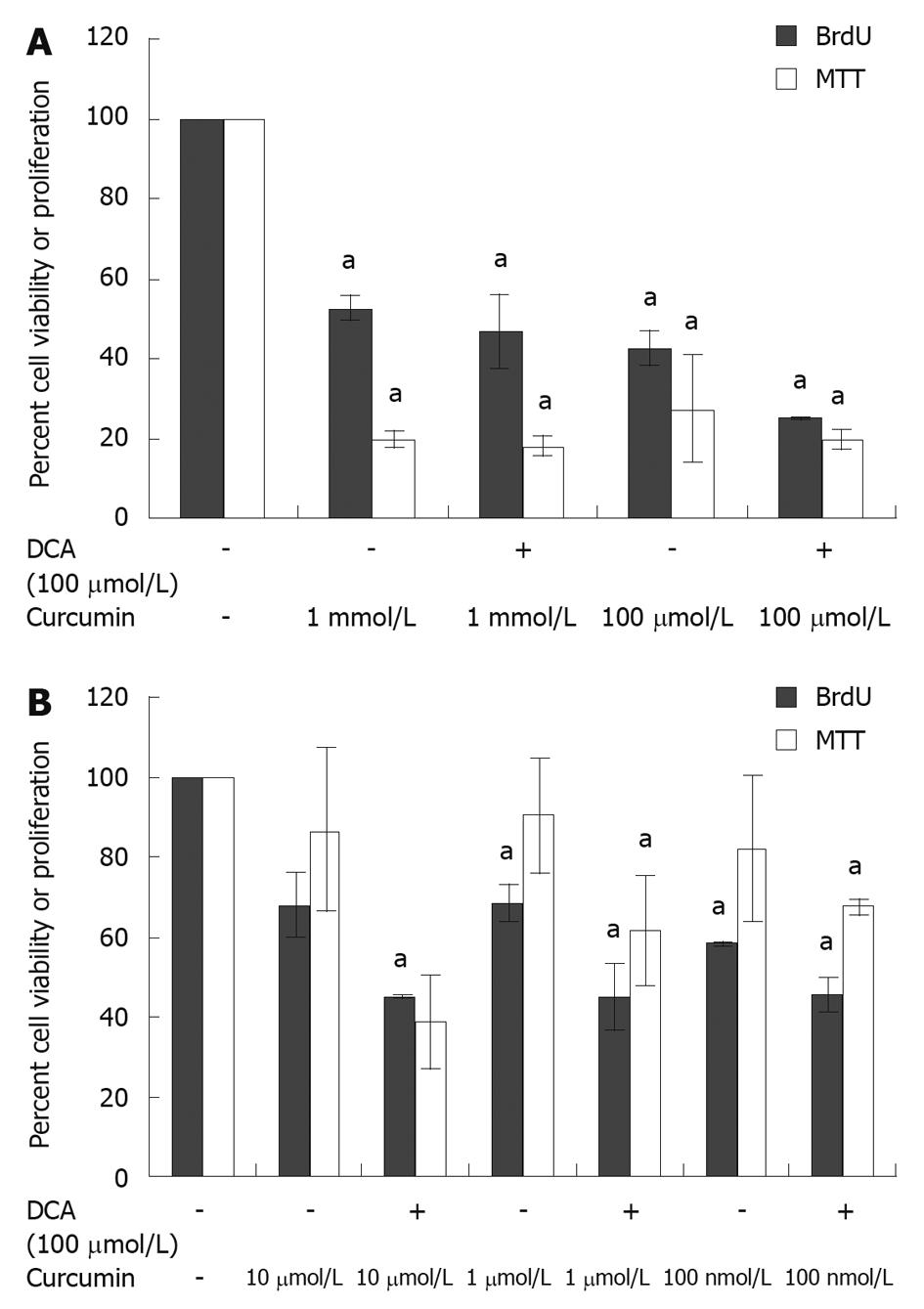Copyright
copy;2010 Baishideng Publishing Group Co.
World J Gastroenterol. Sep 7, 2010; 16(33): 4152-4158
Published online Sep 7, 2010. doi: 10.3748/wjg.v16.i33.4152
Published online Sep 7, 2010. doi: 10.3748/wjg.v16.i33.4152
Figure 1 Effect of curcumin concentration on cell viability and proliferation at concentration ≥ 100 μmol/L (A) and ≤ 10 μmol/L (B).
HET-1A cells incubated in 96-well plates at a density of 10 000 cells/well for 24 h demonstrated decreased cell viability and proliferation in the presence of curcumin at a concentration ≥ 100 μmol/L or ≤ 10 μmol/L. The viability and proliferation were also reduced in the presence of curcumin combined with deoxycholic acid (DCA) when compared to vehicle control (2.5% ethanol). aP < 0.05 vs vehicle control. MTT: 3-(4,5-Dimethyl-2-thiazolyl)-2,5-diphenyl-2H-tetrazolium; BrdU: 5-bromo-2’-deoxyuridine; DCA: Deoxycholic acid.
- Citation: Bower MR, Aiyer HS, Li Y, Martin RC. Chemoprotective effects of curcumin in esophageal epithelial cells exposed to bile acids. World J Gastroenterol 2010; 16(33): 4152-4158
- URL: https://www.wjgnet.com/1007-9327/full/v16/i33/4152.htm
- DOI: https://dx.doi.org/10.3748/wjg.v16.i33.4152









